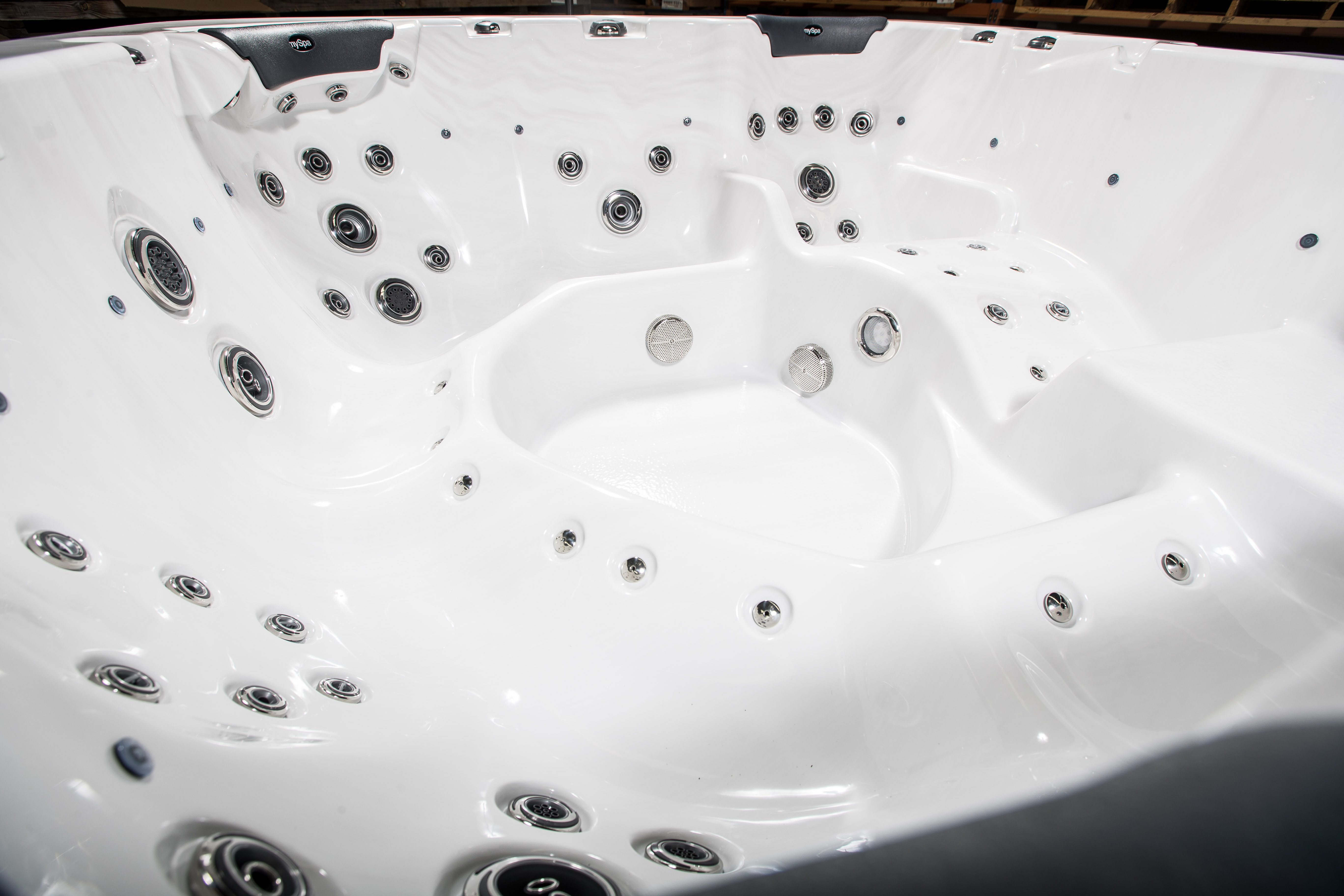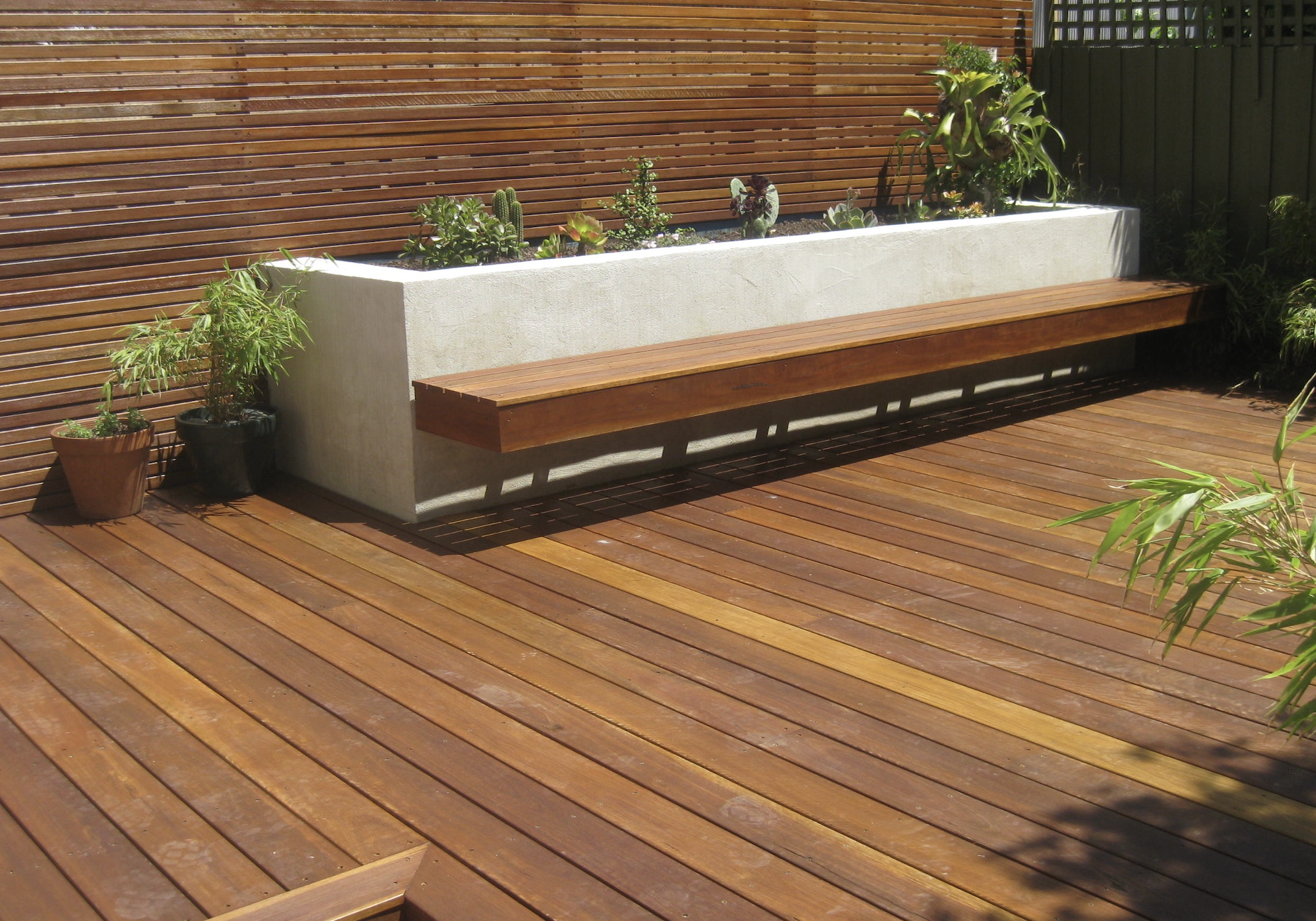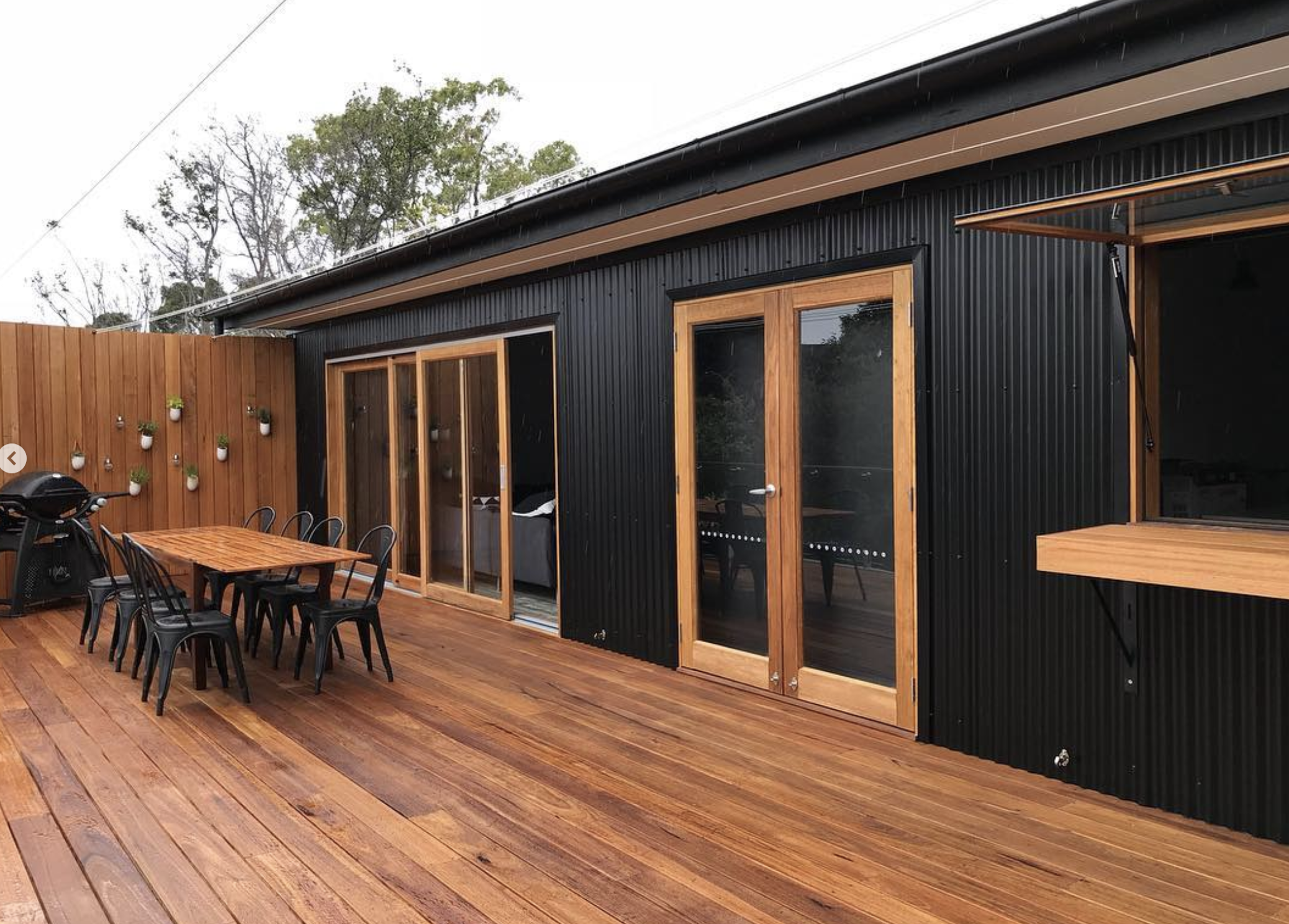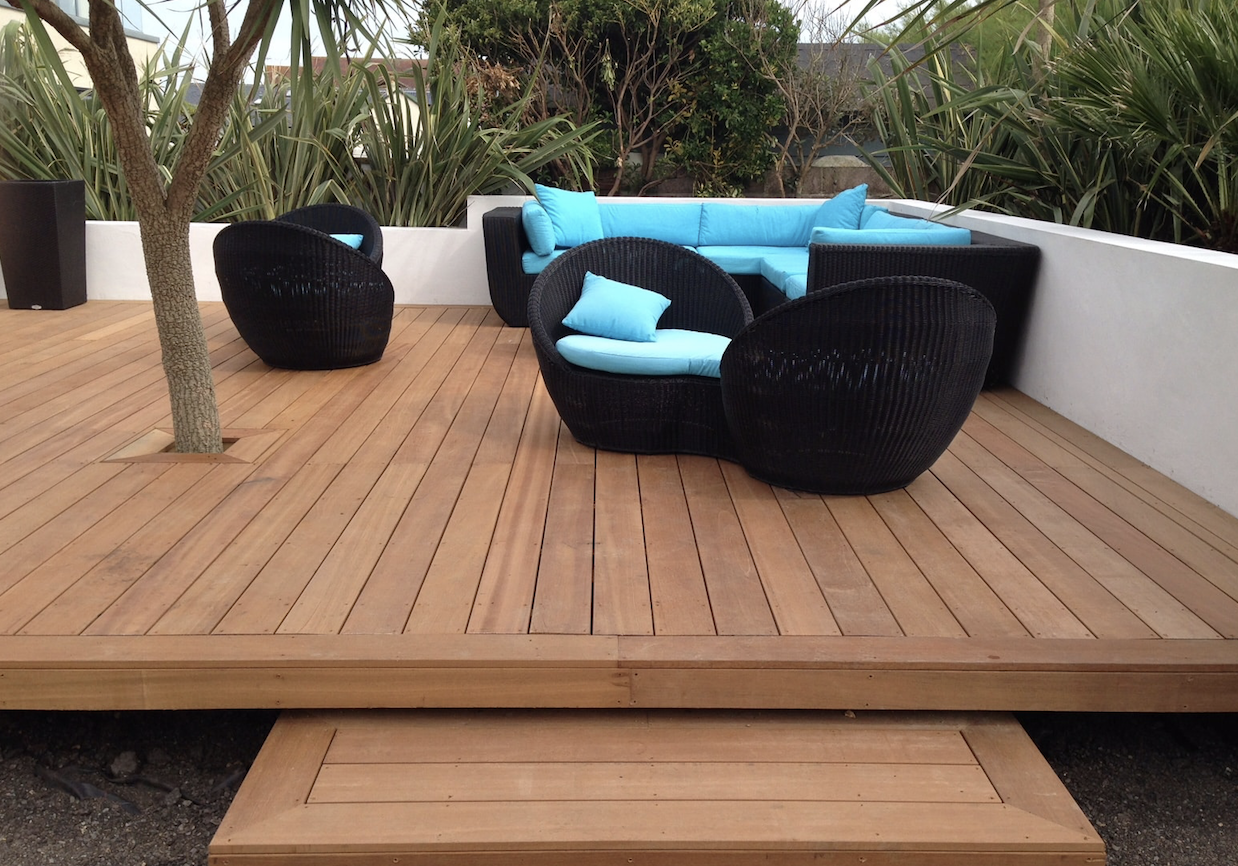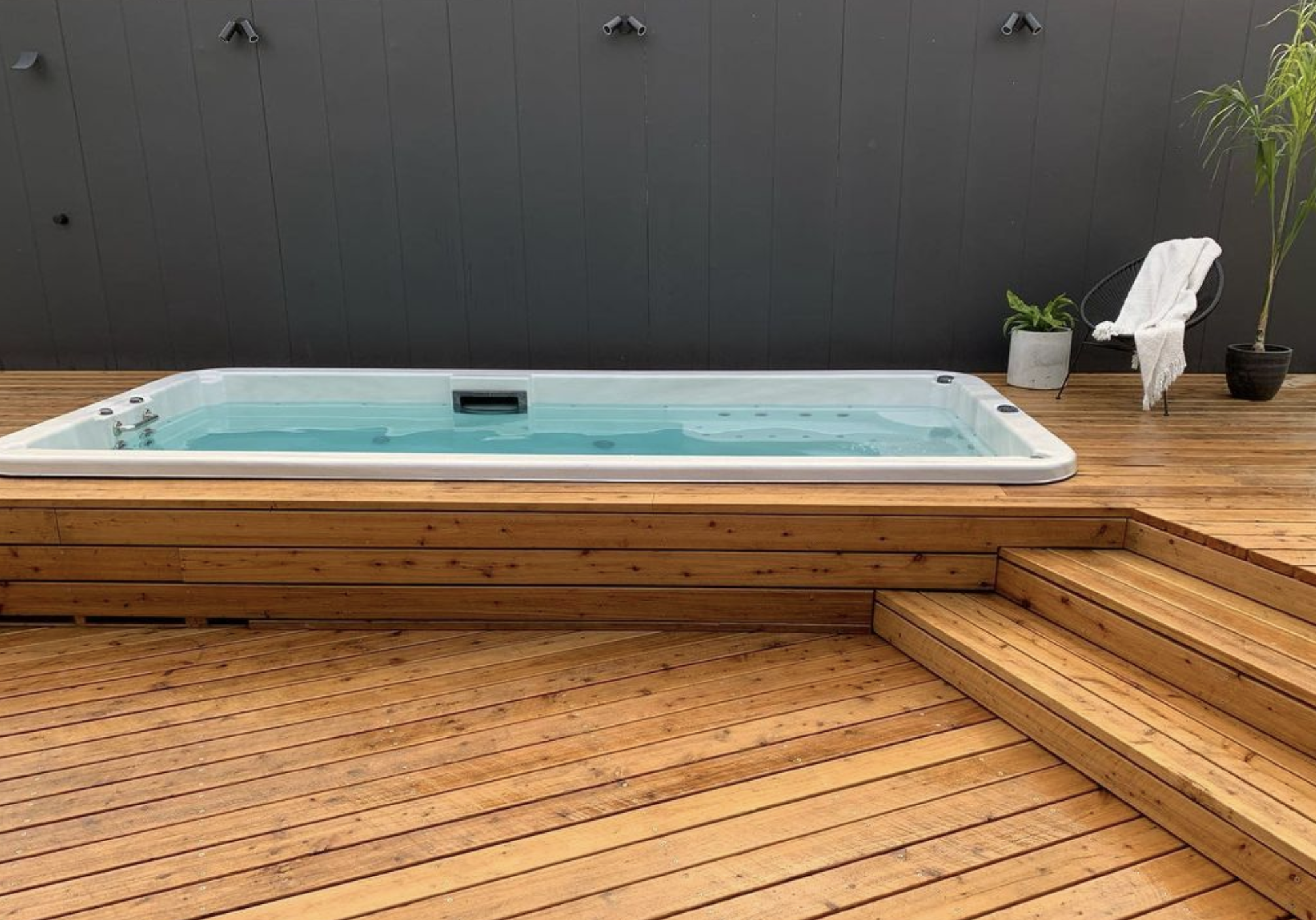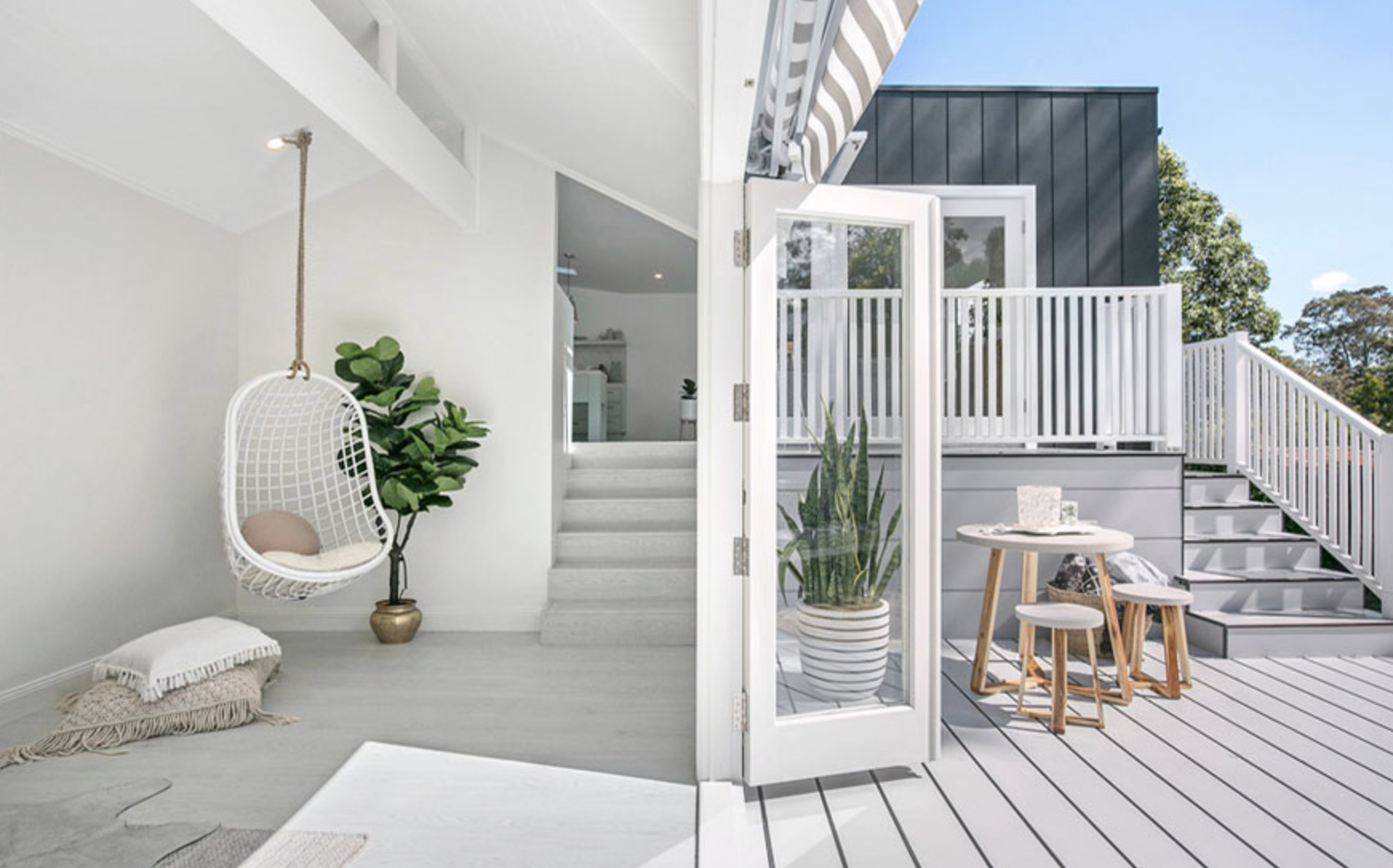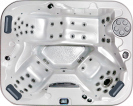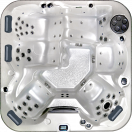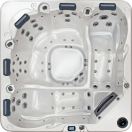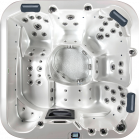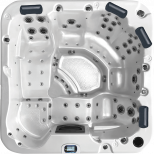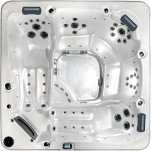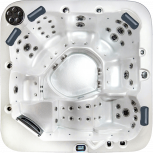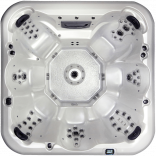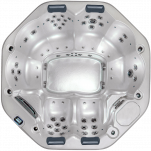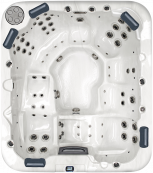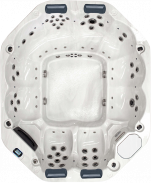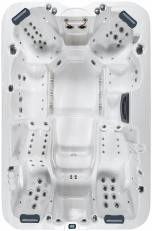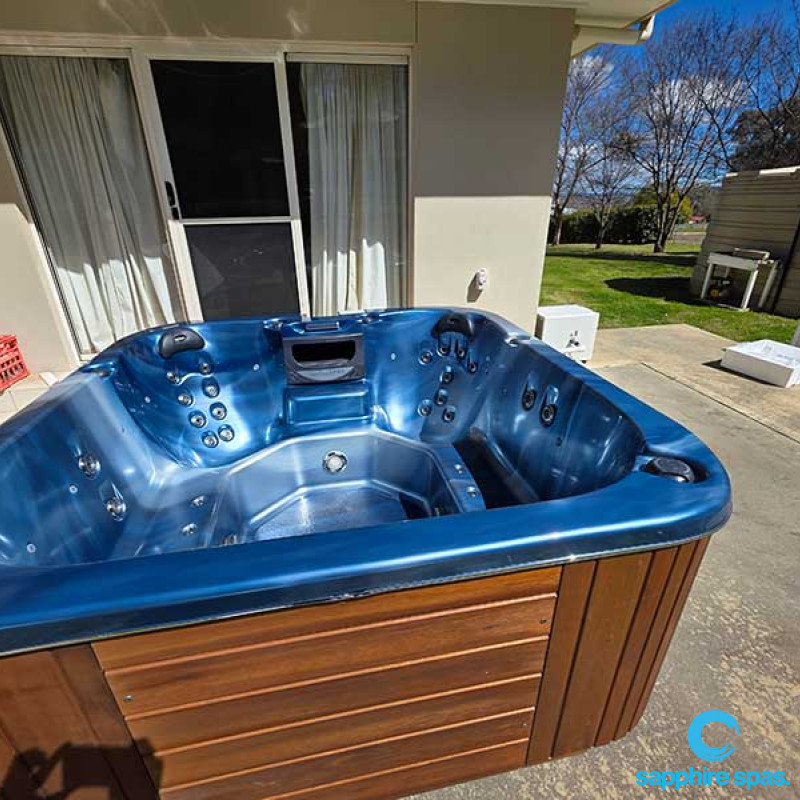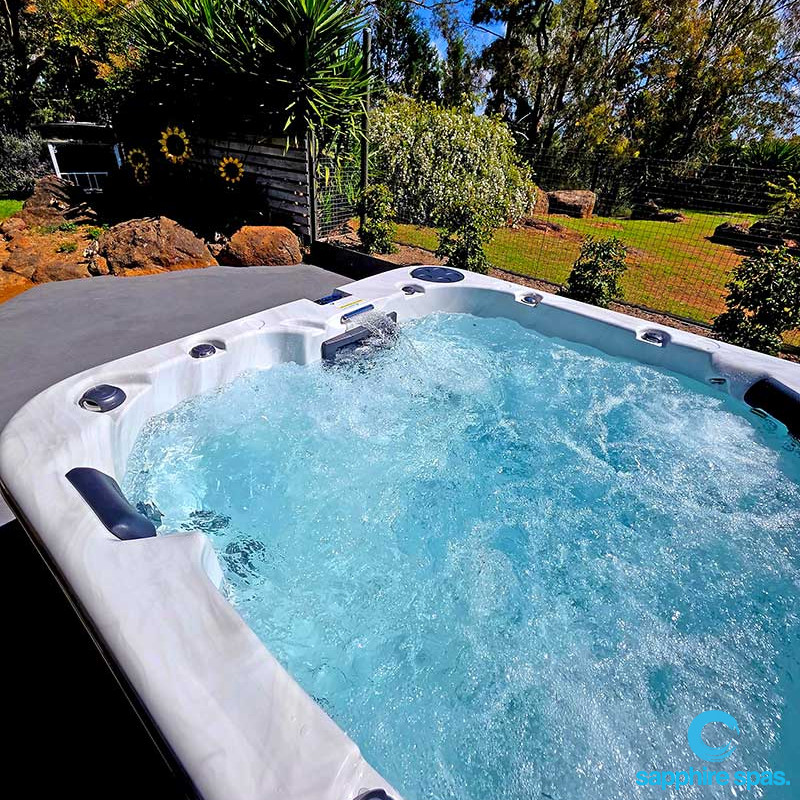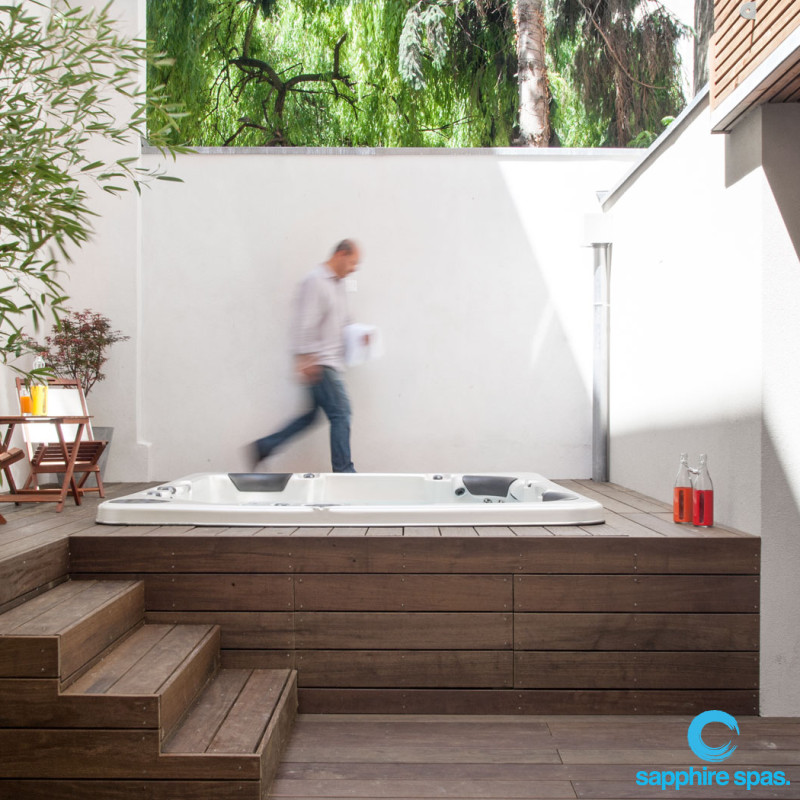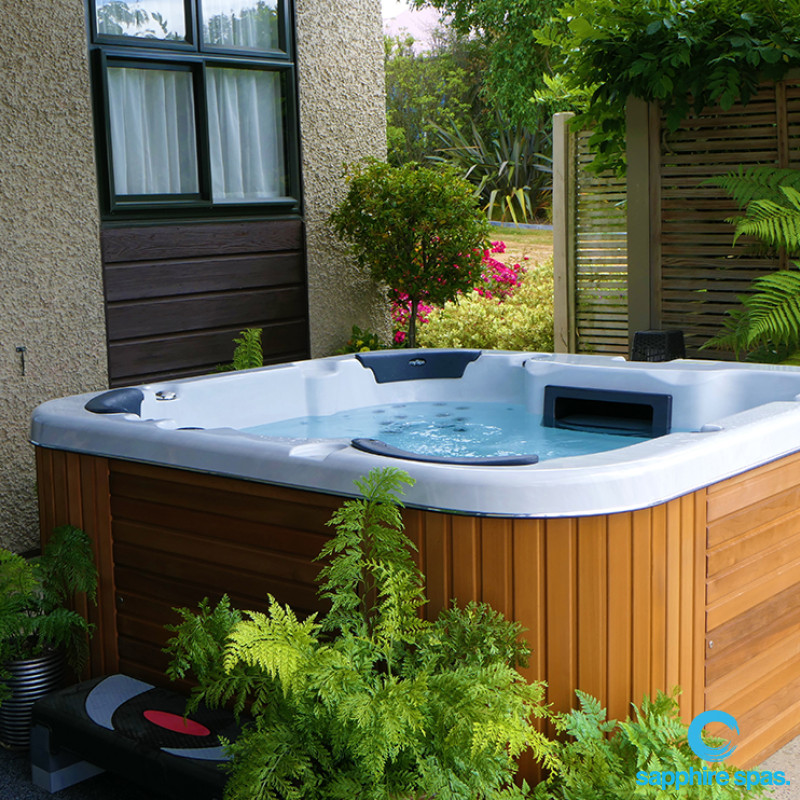Why Coatings Are a No-go
As a rule, coating-type protections have several drawbacks. First, they conceal the natural appearance of the wood grain and structure which is a big part of the aesthetic appeal of decks. Second, they can be a safety hazard as they tend to cause water to pool on the surface and can become very slippery when wet, plus they are more likely to allow mould or fungus to grow on their surface creating slip hazards and damaging the protective coating. Third, because they are bonded to the surface of the wood when they come time for renewal they need to be scraped or sanded off the surface and this can be a very slow (and expensive) process. This also means that over time they are easily worn off by use and foot traffic, degrading the protective qualities of the coating.
Coatings can still be used, but they require a lot of additional prep work and they’re only suitable for well-covered or fully-enclosed decks. This ensures that they won’t get excessively wet and are less likely to become slippery. Preparation for each is also non-standard, may vary by product and they will still be prone to accelerated wear if you use your deck frequently.
Treatments, the Way to Go
By far, the best way to prepare your deck for summer and protect it for the years to come is with a quality stain or oil. It’s important to cover here that some stains are applied separately and then require an oil coat for protection while others are applied as an oil and stain combined. On the other hand, if you love the natural appearance of your deck then a clear or semi-clear oil is all that is required. The great thing about applying stains and oils is how fast and easy they are to both apply the first time and reapply in future, although most will last for 8 or more years.
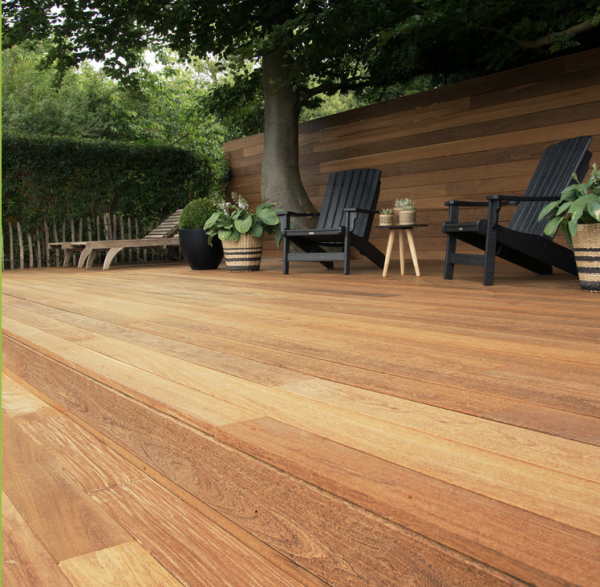
Correct Preparation
Preparing your deck for a new treatment is quite straightforward and thankfully fairly easy, but it does depend on the condition your deck is in. Brand new decks are the easiest, while lightly weathered or previously stained and oiled are the next most simple, on the other hand badly weathered, or previously painted or varnished decks are the most involved.
Note: For mild damage such as small cracks, holes or knots you should apply the first coat of your chosen treatment, fill the hole with wood putty and then apply follow-up treatment.
The preparation process for new decks:
- Wet your timber with a wet towel to make it damp (not soaking wet).
- Scrub your timber with your preferred brand of timber prep. Use a stiff-bristled brush while the timber is still damp. It is recommended that you use a timber prep recommended by your stain or oil manufacturer.
- Wipe off excess water with a squeegee or towel and allow timber to dry until it is barely damp, this can be accelerated with a leaf blower. At this point, you can apply your oil or stain.
The preparation process for older decks:
- For all older decks, the first step is to inspect your deck for damage. Remove and replace any rotten or severely damaged wood. Be that deck planks or the substructure, you need to start with a structurally sound deck. In addition, make sure that any nail or screw heads are flush with the surface to remove them as trip hazards and prevent them from tearing your sand paper during any sanding that is required.
For previously painted or varnished decks:
- Remove any existing coating with a paint scraper and/or paint stripper, alternately you may choose to sand your deck. You should be left with bare, fresh timber.
- Clean your deck with your preferred brand of deck cleaner following the label instructions. This process is usually similar to the timber preparation in steps 2 and 3 recommended for new decks.
For previously stained or oiled decks:
Sanding may not be required and if it is it will be done after cleaning. Begin with cleaning just as for step 3 given for previously painted decks. Most brands of decking oil and stains will recommend the best deck cleaner for their product.
- Once the deck is clean, check that it is ready to be treated by sprinkling or lightly spraying the surface with water. If the water beads on the surface then too much old treatment remains, in this case, you should sand your deck with a belt sander or sanding block or a timber stripper can be used. Once water is absorbed into the surface instead of beading on top, your deck is ready for its new treatment.
For badly weathered decks:
Follow the steps as given for painted or varnished decks, however rather than using a paint stripper you may use a timber stripper or simply use a belt sander until the surface is clean and fresh wood is visible.
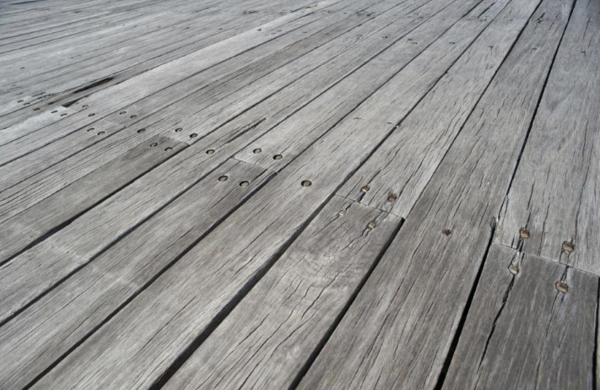
What Is the Best Deck Finish?
Deck oils and stains come in two varieties, water-based and oil-based. Provided that you use a high-quality product both will provide a good level of weather protection and repel water from your deck. Each has its pros and cons as covered below.
Water-based:
Water-based products usually dry within 2-4 hours for quick and easy recoats and are also easier to apply in areas with unpredictable weather due to their fast drying times. In addition, being water based they are very easy to clean up afterwards.
Oil-based:
Oil-based deck oils and stains can take a lot longer to dry, usually 12-16 hours before use and/or recoating. These products are also more temperature-dependent when drying so in poor weather they will need to be covered and sometimes even heated to cure correctly. In addition, they usually need turpentine or other petroleum-based cleaning agents for cleanup. On the plus side, they will penetrate wood deeper than their water-based counterparts and typically offer a few years of extra protection.
Choosing a Colour:
Regardless of whether you choose water-based or oil-based, you will also have to choose the colour you want for your deck. Semi-clear coats come from extremely clear to heavily tinted, depending on the brand and water or oil base. These are great options for only slightly changing the natural appearance of your deck while still providing excellent protection.
If you do want a different colour for your deck, consider using a quality stain to tint the colour. Jarrah and Red Wood are common options in Australia, though a range of colours from Baltic pine whites to mahogany browns are available. Some stains are applied separately to oil and require and require a semi-clear oil treatment to protect them. More recently stain and oil products that both stain and oil in one application are becoming popular, be careful to check with your supplier what is required from the brand and colour you choose.
Other Options:
A common alternative to wooden decks is using modern synthetic decking materials. If your deck is aged and in need of substantial repair or replacement, a synthetic deck replacement may be ideal. Brands such as Duratek provide a range of colours made from durable materials and UV-stabilized colours providing years of enjoyment without the hassle of having to recondition your deck in future. Usually, a pressure wash once a year is all that is required for maintenance.
How to choose a deck oil:
There are a lot of factors to consider when choosing what is right for you. Plantation-grown hardwood or pine decks offer an environmentally sustainable and naturally beautiful finish. They can be stained almost any colour you like or look equally nice coated in a quality semi-clear oil.
The questions to ask are:
Is your deck fully enclosed or well protected?
If so, either a coating or treatment is suitable to consider.
Will your deck be used frequently or be the main accessway to your home with heavy foot traffic?
If so, then coatings such as paint or varnish will not have a long life and may create an unnecessary fall hazard.
Is your deck being built new or pre-existing?
If new, a synthetic product such as Duratek is worth considering. If it’s an existing wood deck then a protective treatment is required.
Which brand is right for you?
In Australia, there are several popular brands available that produce excellent results. The main brands are Cabots, Feast & Watson and Cutek. Cabots is the most popular brand at Bunnings for DIYers, Feast & Watson is a popular choice on new homes and decks and Cutek holds the crown as the top-shelf choice for the professional. However, all of these products, when applied according to the manufacturer’s directions will provide a stunning-looking and most importantly, high-quality finish that will protect your deck and impress your neighbours and friends.
What colour should you choose?
There is no single right answer to colour, however, it is important to look at the big picture. Are you planning to redesign your outside living area or repaint the house? If so, consider the colour scheme that you want for your private garden paradise, applying the wrong colour can make or break the aesthetic of your hideaway. Your décor is also an important consideration, are you planning to have a spa pool on your deck or other features?
